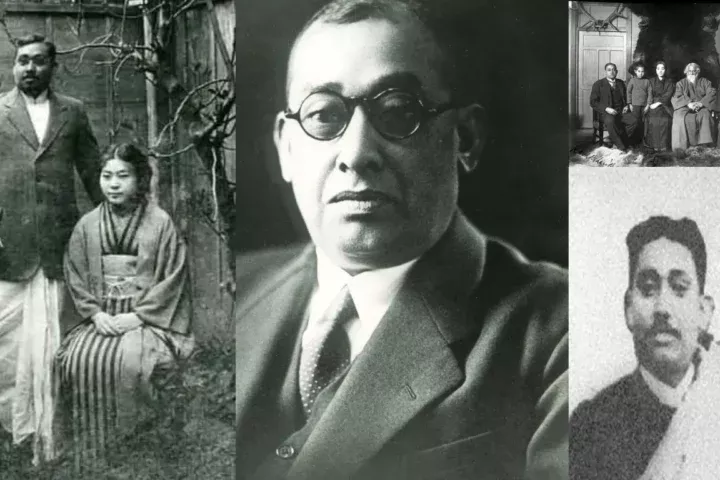Maldives’ new President Mohamed Muizu’s famous “India Out” campaign aimed to reduce Indian influence in the country. Know all about India-Maldives Relations in this article

More on the News
Amid rising tensions, India’s Ministry of External Affairs summoned the Maldivian envoy over disrespectful remarks by three deputy ministers.
The Indian High Commissioner to Maldives held a meeting with Maldivian authorities, clarified by the Indian High Commission.
The Israeli Embassy joined the fray, lauding Lakshadweep’s tourism on social media amid the diplomatic spat.
President Muizzu responded by suspending the three ministers responsible for the contentious comments.
Maldivian Foreign Minister Moosa Zameer condemned the remarks, stressing commitment to positive dialogue.
Concerns mount over potential impacts on the Maldives’ tourism industry due to online boycott campaigns from India.
India-Maldives Tourism
India’s diplomatic tensions with the Maldives have impacted the tourism sector, as derogatory remarks by Maldivian ministers following Prime Minister Narendra Modi’s visit sparked a backlash. Despite Indians being the top tourists in the Maldives, with over 2.09 lakh visitors in 2023, a “Boycott Maldives” trend on social media and prominent figures urging exploration of Indian islands emerged.
EaseMyTrip suspended flight bookings to the Maldives, and celebrities like Amitabh Bachchan advocated for domestic destinations. The Maldivian government took action against the ministers, but concerns about economic repercussions persist, with former sports minister Ahmed Mahloof urging swift resolution.
Maldives-India Relations Recent Developments
Maldives’ new President Mohamed Muizu’s famous “India Out” campaign aimed to reduce Indian influence in the country. This timeline tracks developments after his election
Date Event
November 2023 Mohamed Muizzu became President, associated with China’s Belt and Road initiative through Abdulla Yameen.
November 2023 Breaks tradition by visiting Turkey instead of India as his first official visit.
December 2023 Claims India agrees to remove troops from Maldives, breaking with prior arrangements.
December 2023 Cabinet decides not to renew a 2019 hydrology pact with India, citing sovereignty concerns.
January 2024 Three Maldivian ministers accuse India of harming tourism; they are later suspended.
Maldives
- Maldives, situated in the Indian Ocean, is an archipelago of more than 1,000 distinct islands.
- It is located about 300 miles from the southern coast of India and 450 miles southwest of Sri Lanka.
- The majority of the Maldivian population adheres to Sunni Islam.
- However, being a low-lying nation, most of its landmasses are merely a meter above the sea level, rendering it highly susceptible to the adverse impacts of climate change and rising sea levels.
India-Maldives Relations
- India and Maldives have long-standing friendly and close ties, sharing ethnic, linguistic, cultural, religious, and commercial connections that date back to ancient times.
- India was one of the first countries to establish diplomatic relations with Maldives after its independence in 1965, with its mission in Male being set up in 1972.
- Since then, the two countries have strengthened their bilateral relations through regular contacts at all levels.
- Maldives established a full-fledged High Commission in New Delhi in 2004, which was one of only four diplomatic missions at that time.
- Guided by the principles of South-South cooperation and solidarity, India and Maldives have collaborated bilaterally with a focus on developing soft power leverage among their neighbours.
- Given its strategic location in the Indian Ocean, Maldives holds significant importance for India as part of its “Neighborhood First” policy.
Areas of Cooperation Political
- The political area of cooperation between India and Maldives includes regular high-level visits by leaders of both countries, support for each other in multilateral fora such as the UN, the Commonwealth, the NAM, and the SAARC, and discussions on security and law enforcement cooperation.
- Both countries have also reaffirmed their commitment to an India-first policy, and India has provided developmental assistance to Maldives.
- However, after the deterioration of India’s relations with Maldives due to China’s cultivation of ties with former Maldives President Abdulla Yameen, the situation improved after the election of Ibrahim Mohamed Solih as the new president of Maldives in 2018.
- The most recent visit of Maldives President to India in August 2022 aimed to enhance geopolitical, security, and economic ties between the two countries, especially in light of the economic and political turmoil faced by their common neighbour, Sri Lanka.
Economic
- India and Maldives have a bilateral trade agreement in place since 1981, which allows for the export of essential commodities.
- Bilateral trade between India and Maldives has been steadily growing, crossing the $300 million mark for the first time in 2021 and registering a 31% growth over the previous year, despite pandemic-related challenges.
- India is now Maldives’ 2nd largest trading partner, up from the 4th position in 2018.
- Indian exports to the Maldives include a variety of products such as agriculture and poultry produce, sugar, fruits, vegetables, spices, rice, wheat flour, textiles, drugs and medicines, engineering and industrial products, sand and aggregate, cement, etc.
- In return, India provides essential food items such as rice, wheat flour, sugar, dal, onion, potato, and eggs, as well as construction materials such as sand and stone aggregates to the Maldives on favourable terms.
- India has also expressed its interest in cooperating with the Maldives in the petroleum and natural gas sectors, particularly in oil exploration, as well as in tourism and education.
Defence and Security
India and Maldives have a close defence and security relationship that includes a range of activities such as joint combat exercises, maritime surveillance, and supply of military equipment to Maldives
- The partnership is important for maintaining security in the Indian Ocean region (IOR) and countering common threats such as radicalism, terrorism, drug trafficking, and financing of terrorism.
- India and Maldives have been conducting joint military training exercises and Coast Guard training exercises since 1991.
- India has also provided security assistance to Maldives in the past, such as when the Indian Army’s ‘Operation Cactus’ foiled a coup in Maldives in 1988, and when India dispatched relief supplies and aid after the tsunami of December 26, 2004, and after a fire destroyed the generator of Maldives’ biggest water treatment plant in 2014.
- India has also pledged to provide vehicles, naval boats, and training to Maldives’ security forces and to cooperate in building police facilities in Maldives.
- India has also encouraged Maldives to embrace the Quad’s Pacific strategy, which involves India, the US, Japan, and Australia
Developmental Assistance
- India has been providing development assistance to Maldives in various areas such as health, education, transport, waste management, natural disaster management, and skill and capacity building.
- Both countries have signed a Framework Agreement on Cooperation for Development in 2011.
- India has provided budgetary support of Rs. 100 million to Maldives after the tsunami in 2004.
- The Indian government has extended a $100 million Standby Credit Facility to Maldives to stabilize its fiscal position.
- India has undertaken various infrastructure development projects in Maldives, including the construction of a Composite Training Centre for Maldives National Defence Force, housing units, and a solar energy project.
- India has also provided financial assistance, such as a currency swap facility of US$150mn in 2020, and is the largest tourist source market for Maldives.
- Other India-assisted projects in the region include water and sewerage projects, reclamation projects, port development, airport redevelopment etc
Greater Male Connectivity Project
- Afcons, an Indian company, has signed a contract for the largest-ever infrastructure project in Maldives-Greater Male Connectivity Project (GMCP).
- The Project will consist of a 6.74 km-long bridge and causeway link between Male and nearby islands of Villingli, Gulhifalhu and Thilafushi. It will use renewable energy.
- The project is funded by a grant of USD 100 million and a Line of Credit (LOC) of USD 400 million from India.
- It is not only the biggest project India undertakes in the Maldives but also the biggest infrastructure project in the Maldives.
Significance of India-Maldives Relations.
- It is considered the economic lifeline for the Maldives and will provide a major boost to connectivity between the four islands accounting for about half of the Maldivian population.
- It will enhance Maldivian transport and economic activities.
- Culture: The Indian community in Maldives is the second largest expatriate community in the country, comprising approximately 22,000 workers and professionals such as doctors, teachers, accountants, engineers, and technicians.
- Improved air connectivity and the close proximity between the two nations have led to a significant increase in the number of Indians visiting Maldives for tourism and business.
- India is a popular destination for Maldivians seeking education, medical treatment, recreation, and business opportunities.
- Indian experts successfully restored three historical mosques in Maldives – the Friday Mosque and Dharumavantha Rasgefaanu Mosque in Male’ and the Fenfushi Mosque in South Ari Atoll.
- To promote Indian culture and traditions, the India Cultural Center (ICC) was established in Male in 2011. The centre conducts regular courses in yoga, classical music, and dance.
Significance of Maldives for India
- Geostrategic: Maldives is an important member of India’s Neighbourhood First Policy and SAGAR (Security and Growth for All in the Region) vision.
- Geopolitical: China’s Belt and Road Initiative (BRI), involving the Maldives has widened the Chinese sphere of influence that has the potential to adversely affect India’s interests.
- Geo-economics: 50% of India’s external trade and 80% of our energy imports transit through the Sea lanes of communication (SLOCs) in the vicinity of the Maldives.
- Net Security Provider: Maldives is positioned like a “toll gate” between the western and Eastern Indian Ocean.
- Regional Cooperation: Both Nations are engaged through platforms like SAARC, SASEC, IORA and IONs….
Challenges in India-Maldives Relations.
The challenges in India-Maldives relations can be categorized into various areas:
- Political Instability: The ongoing political instability in the Maldives, including the arrest of opposition leaders, declaration of emergency, and lack of genuine political dialogue, has posed a significant challenge to India’s neighbourhood policy.
- Relation with China: China’s increasing strategic presence in the Maldives, including its interest in developing infrastructure, acquiring land, and signing a free trade agreement, has raised concerns for India’s security and strategic interests.
- Radicalization and Terrorism: The rise of Islamist radicalism in the Maldives, coupled with the possibility of terrorist groups using remote islands as launch pads for attacks against India, has raised security concerns.
- Indian Ocean Region: Maldives’ strategic location along major sea lanes in the Indian Ocean and its vulnerability to piracy and sudden environmental changes have become key concerns for India.
- Climate Change: Maldives’ vulnerability to climate change, including rising sea levels and natural disasters, has implications for India’s security and development interests.
- Development: Unequal development among atolls and lack of funds to develop connectivity and infrastructure pose challenges for initiating various development projects in the region.
- GMR Issue: The termination of the agreement with GMR for the modernization of the Ibrahim Nasir International Airport, followed by arbitration and the subsequent award of the project to a Chinese company, has strained India-Maldives relations.








